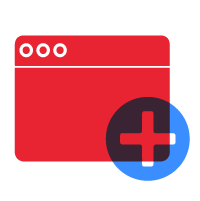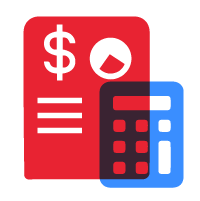Artificial Intelligence (AI) and Machine Learning (ML) have emerged as transformative forces, driving innovation across virtually every industry. From self-driving vehicles to chatbots, facial recognition to fraud detection, intelligent systems are reshaping how we live, work, and interact with technology. But behind these powerful AI models lies a lesser-known hero: data annotation.
Often described as the “invisible labor” behind AI, data annotation is the process that enables machines to see, read, hear, and understand the world as humans do. Without it, machine learning algorithms are blind to the patterns that drive intelligent decision-making.
This blog explores the full scope of data annotation—what it is, why it matters, the different types, tools used, real-world applications, challenges faced, and emerging trends that are reshaping the future of intelligent systems.

What is Data Annotation?
Data annotation refers to the process of adding metadata or labels to raw data so that machines can recognize and interpret it correctly. This “labeling” can be as simple as tagging an image of a dog with the word “dog” or as complex as outlining every single pixel of a tumor in a medical scan to distinguish it from surrounding tissues.
In essence, data annotation is the bridge between human understanding and machine intelligence. It provides the ground truth that machine learning models rely on to learn patterns, make predictions, and perform tasks effectively. These labels allow algorithms to classify, segment, or process incoming data based on the patterns they learned during training.
For example, a self-driving car must distinguish between a pedestrian, a stop sign, and a streetlight. It does so by learning from thousands of annotated images where those objects have been correctly identified and labeled. The quality and quantity of these annotations directly impact the accuracy of the resulting model.
Without annotated data, even the most sophisticated AI systems would lack context and fail to deliver reliable results. Annotation transforms unstructured data—like images, videos, and free-form text—into structured, usable information that machines can learn from.
Why is Data Annotation Important?
While AI algorithms are often in the spotlight, they cannot function effectively without accurately labeled data. Here’s why data annotation is so vital:
1. Enables Machine Learning Models to Learn
Machine learning—especially supervised learning—relies heavily on annotated data. In supervised learning, algorithms are trained on input-output pairs. For instance, if the model is to identify animals in images, it needs a dataset where images are labeled as “cat,” “dog,” “bird,” etc. These labels teach the model what features are associated with which outcome.
2. Improves Prediction Accuracy
High-quality data annotation results in high-performing models. The better the labeling, the more accurate the predictions. Poorly annotated data introduces noise and misleads the model, resulting in poor performance, misclassifications, and potentially dangerous errors—especially in critical applications like autonomous driving or healthcare diagnostics.
3. Enables Contextual Understanding
Machines inherently lack contextual awareness. Through annotation, we give machines the context needed to understand sentiment, tone, emotion, or purpose—especially in natural language processing tasks like chatbots or sentiment analysis.
4. Supports Model Validation and Testing
Besides training, annotated datasets are essential for validating and testing models. Developers compare the model’s predictions against the “truth” (the labels) to assess how well the model performs. Without labeled data, there is no objective way to evaluate a model’s accuracy.
5. Facilitates Continuous Improvement
AI models are never truly complete—they require constant fine-tuning based on new data. As more real-world data is collected, it must be annotated to retrain and update the model, helping it adapt to changing environments, behaviors, or languages.
Types of Data Annotation
Data annotation comes in many forms, depending on the type of data being labeled (e.g., images, text, video, or audio) and the specific use case. Here are the major categories:
1. Image Annotation
Image annotation is used primarily in computer vision, where AI models must recognize objects, scenes, or features within visual data. Different annotation techniques are applied depending on the precision required.
- Bounding Boxes: One of the most common methods, bounding boxes involve drawing rectangles around objects in images. This is widely used for identifying vehicles, people, or animals in surveillance, retail, or automotive applications.
- Polygon Annotation: When greater precision is needed—such as labeling the exact contours of irregularly shaped objects—polygon annotation is used. This is crucial in medical imaging (e.g., outlining tumors) or autonomous vehicles (e.g., labeling road boundaries).
- Semantic Segmentation: This advanced technique labels every pixel in an image with a category (e.g., road, sidewalk, car, tree). It allows machines to understand the context of every part of an image and is essential for real-time decision-making.
- Keypoint Annotation (Landmarking): Used to identify specific parts of an object, such as facial features (eyes, nose, mouth), joint positions in human pose estimation, or components of machinery.
2. Text Annotation
Text annotation is critical for training Natural Language Processing (NLP) models. These models require an understanding of language, grammar, tone, and context.
- Named Entity Recognition (NER): Tags specific entities in text such as names of people, locations, dates, organizations, etc. This helps in building chatbots, search engines, and information extraction tools.
- Sentiment Annotation: Labels text as positive, negative, or neutral, helping companies analyze customer feedback, product reviews, or social media sentiment.
- Intent Annotation: Helps AI understand the purpose behind a user’s query or command. For example, “Order a pizza” would be tagged as an intent to place a food order.
- Part-of-Speech (POS) Tagging: Identifies parts of speech such as nouns, verbs, and adjectives in a sentence. This forms the basis for deeper linguistic analysis.
- Coreference Resolution: Identifies when different words refer to the same entity. For instance, in “John said he would come,” “he” refers to “John.”
3. Audio Annotation
Audio annotation is key in training models for speech recognition, voice assistants, sound classification, and even music analysis.
- Speech Transcription: Converts spoken words into text. Accurate transcripts help train models to understand accents, dialects, and background noise.
- Speaker Diarization: Identifies who is speaking and when. This is useful in interviews, meetings, or surveillance.
- Sound Event Detection: Labels background sounds such as clapping, footsteps, alarms, or barking. Often used in surveillance, home automation, or safety monitoring.
- Emotion Annotation: Tags audio data with emotional states such as happy, angry, or sad, which can enhance user interactions with virtual assistants or telehealth platforms.
4. Video Annotation
Video annotation adds a time component to image annotation, tracking objects and events frame-by-frame. It’s essential in applications where object behavior or movement must be understood over time.
- Object Tracking: Annotators track objects across video frames, helping systems recognize motion and patterns. Used in security, retail analytics, and autonomous driving.
- Action Recognition: Identifies specific actions like running, waving, or jumping. It’s crucial in surveillance, sports analytics, and robotics.
- Event Detection: Highlights when certain events happen, such as accidents, thefts, or anomalies.
Industries That Rely on Data Annotation
Data annotation is at the core of AI solutions across a wide range of industries. Here are some key sectors that depend on labeled data:
1. Healthcare and Life Sciences
Medical AI models rely heavily on labeled datasets. Annotated X-rays, MRIs, and CT scans help train models to detect diseases like cancer, pneumonia, or fractures. In drug discovery, NLP models analyze research papers, patient histories, and clinical trials—all requiring annotated text.
2. Automotive and Transportation
Autonomous vehicles use annotated image and video data to understand road environments. This includes recognizing pedestrians, traffic lights, road signs, and lane markings. Annotation allows cars to safely navigate dynamic environments.
3. Retail and E-commerce
Retailers use annotated data for everything from visual search to customer sentiment analysis. NLP annotations help categorize product reviews, while image annotations power recommendation engines and inventory automation.
4. Finance and Insurance
AI systems in finance require annotated data to detect fraud, analyze market sentiment, and automate customer service. Insurance firms use annotated claims forms, accident images, and recorded calls for risk assessment.
5. Agriculture
In smart farming, image annotation helps identify plant diseases, track crop growth, and monitor soil conditions. Drones capture aerial images, which are then labeled to guide irrigation, fertilization, and harvesting.
6. Security and Surveillance
Facial recognition, license plate recognition, and suspicious behavior detection rely on annotated video feeds. These systems help in public safety, border control, and law enforcement.
Tools and Platforms for Data Annotation
Several platforms facilitate the annotation process by providing tools, workflows, and automation capabilities. Commonly used platforms include:
- Labelbox: A customizable platform that supports image, text, audio, and video annotation with collaboration and quality assurance features.
- SuperAnnotate: Ideal for computer vision projects, offering smart tools and AI-assisted annotation to speed up image and video labeling.
- CVAT (Computer Vision Annotation Tool): Open-source tool developed by Intel, popular for object detection and image segmentation tasks.
- Amazon SageMaker Ground Truth: Part of AWS, it offers built-in workflows for human-in-the-loop labeling and automatic labeling using active learning.
- Scale AI: Enterprise-level annotation services with robust data pipeline integration, commonly used in autonomous vehicle development.
Each tool differs in terms of scalability, pricing, user interface, and supported data types. The choice depends on project complexity, required accuracy, and team size.
Related Article:
Data Annotation Tools: Why They’re a Necessity for Every Business Today and Beyond
Learn why data annotation tools are crucial for business success. Enhance data accuracy, improve decision-making, and stay ahead in 2025.
Challenges in Data Annotation
Despite its importance, data annotation presents several challenges:
1. Scalability
Large-scale ML projects require thousands to millions of labeled examples. Scaling annotation while maintaining consistency and accuracy is a major logistical hurdle.
2. Quality Assurance
Annotation quality varies with human input. Inconsistent labeling or misunderstandings of annotation guidelines can introduce noise and hurt model performance.
3. High Costs
Manual annotation is time-consuming and labor-intensive. Complex tasks like medical image annotation require domain expertise, further increasing costs.
4. Data Privacy
Annotating sensitive data (e.g., patient records or financial documents) raises serious privacy and compliance concerns. Annotators must be trained in data handling and legal regulations like HIPAA or GDPR.
5. Subjectivity
Certain annotations—like sentiment or emotion—are inherently subjective. Different annotators may interpret the same data differently, leading to inconsistent labels.
Best Practices for Effective Annotation
To address these challenges, companies should implement best practices such as:
- Establish Clear Guidelines: Detailed annotation instructions ensure consistency across annotators.
- Train Annotators Thoroughly: Well-trained annotators produce higher-quality labels, especially for complex tasks.
- Implement Quality Checks: Use inter-annotator agreement scores, random audits, and feedback loops.
- Use Hierarchical Workflows: Assign simple tasks to general annotators and route complex ones to domain experts.
- Leverage Semi-Automation: Use AI-assisted annotation tools to reduce manual workload and improve efficiency.
The Future of Data Annotation
The field of data annotation is rapidly evolving. Here’s what the future holds:
1. Synthetic Data
AI-generated data (e.g., simulated driving environments) reduces the reliance on real-world data collection and manual labeling. This is especially useful in training models for rare or dangerous scenarios.
2. Self-Supervised and Unsupervised Learning
These techniques reduce dependence on labeled data by allowing models to learn structure and patterns on their own, often by predicting parts of the data.
3. Active Learning
Models identify which data points would be most useful if labeled and request annotation selectively, minimizing workload and maximizing learning efficiency.
4. Annotation-as-a-Service
More organizations are outsourcing annotation tasks to specialized vendors who provide turnkey solutions, including workforce management, quality assurance, and compliance.
5. Crowdsourced Annotation
Platforms like Amazon Mechanical Turk and Appen allow rapid scaling of annotation projects by tapping into a global workforce. However, this requires stringent quality control mechanisms.
Empower Your Data Annotation with Expert IT Support
Behind every successful data annotation project is a reliable IT backbone. From setting up secure annotation platforms to managing cloud infrastructure and tool integrations—we handle the tech so your team can focus on quality labeling.
Work with our expert IT team to streamline your data annotation operations. Let’s connect!
Frequently Asked Questions
How is data annotation different from data labeling?
While the terms are often used interchangeably, data annotation is a broader concept. Data labeling typically refers to assigning tags or categories to data (like identifying an object in an image), while annotation may include more complex tasks such as drawing bounding boxes, transcribing audio, or adding contextual metadata. In short, all labeling is annotation, but not all annotation is just labeling.
What industries benefit most from outsourced data annotation services?
Outsourced data annotation is valuable across industries like healthcare (medical image labeling), automotive (autonomous driving systems), retail (product recommendation engines), finance (fraud detection), and agriculture (crop monitoring using drone imagery). Any sector leveraging machine learning or AI can benefit from high-quality, annotated data.
Is it safe to outsource sensitive data for annotation?
Yes, but only if proper data security protocols are followed. Reputable outsourcing providers implement NDAs, data encryption, role-based access, secure file transfers, and compliance with standards like GDPR and HIPAA. Always verify a provider’s security certifications and practices before sharing sensitive information.
What tools or platforms are used for data annotation?
Common platforms include Labelbox, SuperAnnotate, CVAT, Amazon SageMaker Ground Truth, and VGG Image Annotator. These tools vary in functionality based on the data type (image, text, video, audio) and support collaborative workflows, quality checks, and exportable data formats.
Can annotated datasets be reused for multiple AI models?
In some cases, yes. If the annotations are relevant and structured properly, datasets can be reused or repurposed for other models. However, different models may require additional or more granular annotations, so it’s important to plan ahead based on future scalability and use cases.







